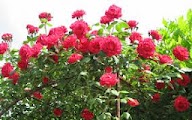The history of a nation can be learned in its constitution, its laws and its political statements. But to know the history of a nation’s spirit, you must read its literature. For in literature you can discover how the people of a nation have reacted to the events around them. In the stories, essays and poems contained in this volume, you will read the dreams, anxieties, joys and problems of the Filipino in the past seventy-five years. By reading this development of Philippine Literature you will review what has happened to the Filipino since 1900.
But literature offers much more than a mere personalized history. For an important quality of art is to share with others the intense realization of a human experience. Through this sharing, you may recognize your own experiences. You may learn what you are or how you have become what you are. You may even learn what you might be in the future. Philippine literature shows you how the Filipino differs from others. Yet in a sense the Filipino writer is linked with all the other writers of the world. For in explaining or questioning human experience, writers are never alone. Philippine Literature in English is really a part of the literatures of the world.
A further quality of literature is that the expressions used should be memorable. The language should be clear and forceful so that the ideas strike the reader with almost the same force with which they struck the writer. The early Filipino writers had difficulty in expressing themselves since English was a language new to them. The marvel is that they learned this language so quickly and with such facility.
Philippine literature in English reveals the spirit of the Filipino. Gradually this literature has learned to express the deepest of human experiences in words that create memorable images. You may divide Philippine Literature in English into many types and numerous periods. But for our purposes, we shall consider three stages through which the literature has passed. The Philippine literature, it is important because by this we can preserve the literatures we have today. If no one would introduce or explain it to the up coming generations it would not exist in the next generation.



